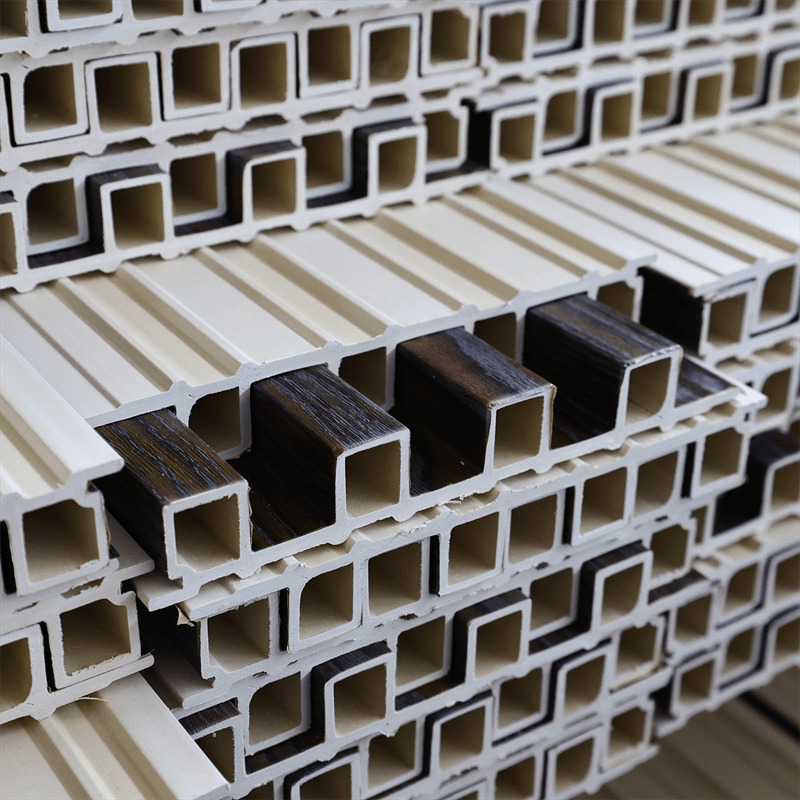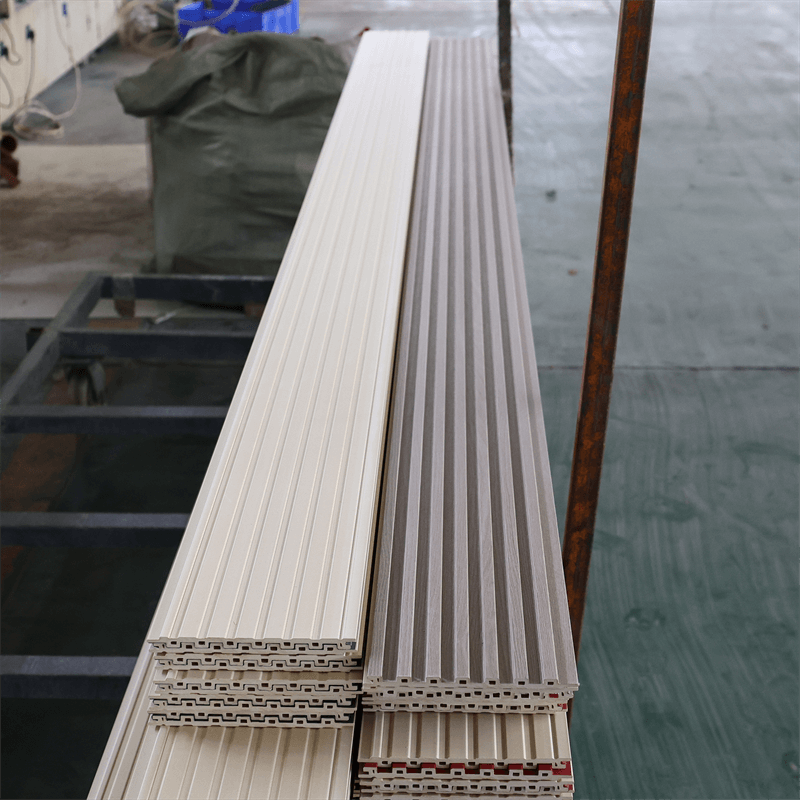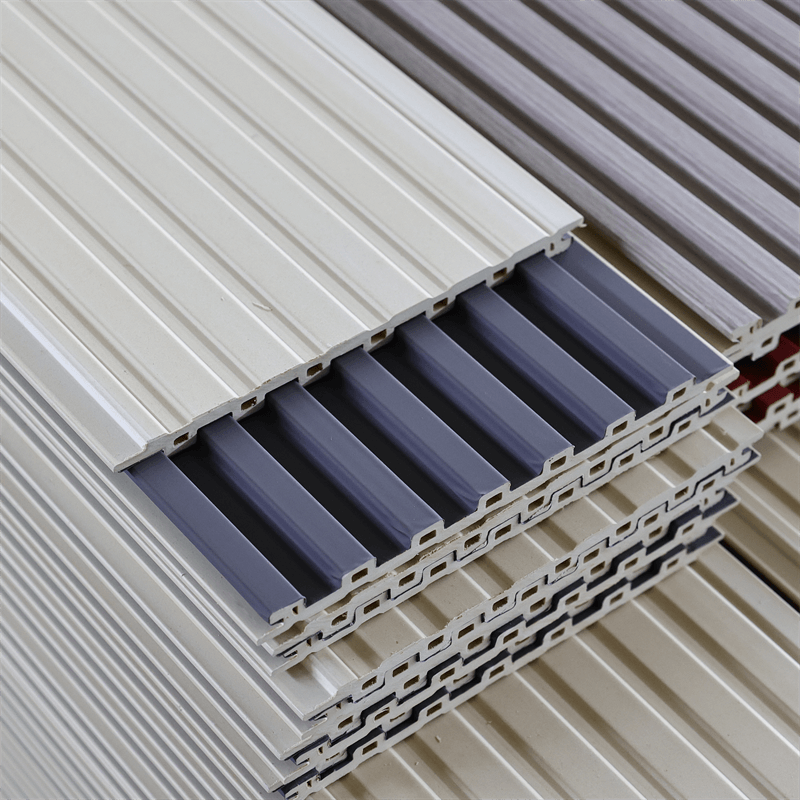When it comes to choosing wall materials for your home or commercial space, there are numerous options available.
Traditional wall materials such as brick, wood, and drywall have been the go-to choices for decades.
However, in recent years, WPC (Wood Plastic Composite) wall panels have gained popularity due to their unique properties and benefits.
In this essay, we will explore the comparison between WPC wall panels and traditional wall materials, assessing their qualities in terms of durability, aesthetics, sustainability, and ease of installation.
By examining these factors, we can determine which option is better suited for various applications.

I. Durability: Strength and Resilience
A. Traditional Wall Materials Traditional wall materials like brick and drywall are known for their strength and durability.
Brick walls are sturdy and can withstand external forces such as impacts and weather conditions.
The thickness and solidity of brick make it a reliable choice for long-lasting structures.
On the other hand, drywall, also known as gypsum board or plasterboard, is a popular choice for interior walls.
While it is not as robust as brick, it provides sufficient structural support for residential and commercial buildings.
B. WPC Wall Panels WPC wall panels are designed to be highly durable and long-lasting.
They are made from a combination of wood fibers and plastic, which results in a material that is resistant to rot, decay, and termite damage.
WPC panels also have excellent dimensional stability, meaning they are less prone to expansion and contraction due to temperature and humidity changes.
This durability ensures that the panels maintain their structural integrity over time, reducing the need for frequent repairs or replacements.
II. Aesthetics: Design Options and Visual Appeal
A. Traditional Wall Materials Traditional wall materials offer a range of design options, but they may be limited in terms of visual appeal.
Brick walls have a classic and rustic charm, adding a sense of warmth and authenticity to a space.
The natural variations in color and texture of brick contribute to its timeless appeal.
Drywall, on the other hand, provides a blank canvas for interior design.
It can be finished with various materials, including paint, wallpaper, or texture, allowing for customization to match different styles and preferences.
B. WPC Wall Panels WPC wall panels provide a wide array of design options and visual appeal.
They come in various colors, textures, and patterns, allowing for customization to match different interior styles.
The panels can mimic the look of natural materials like wood or stone, offering a more versatile and modern aesthetic.
The ability to choose from a range of finishes and designs ensures that WPC panels can seamlessly integrate into any space, whether it be a contemporary office or a traditional residential setting.
III. Sustainability: Environmental Impact and Maintenance
A. Traditional Wall Materials Traditional wall materials have varying degrees of sustainability.
Brick walls are made from natural clay, making them an eco-friendly choice.
The manufacturing process of bricks involves energy consumption and carbon emissions, but their longevity and recyclability can offset their environmental impact.
Drywall, on the other hand, requires the use of gypsum, which is a non-renewable resource.
However, efforts are being made to improve the sustainability of drywall production by incorporating recycled materials and reducing waste.
B. WPC Wall Panels WPC wall panels are considered a more sustainable option.
They are made from a blend of recycled wood fibers and plastic, reducing the demand for virgin materials and diverting waste from landfills.
The production of WPC panels consumes less energy and generates fewer greenhouse gas emissions compared to traditional wall materials.
Additionally, WPC panels have a longer lifespan and require minimal maintenance, reducing waste and the need for frequent replacements.
The sustainable nature of WPC panels makes them a viable choice for individuals seeking eco-friendly building materials.
IV. Ease of Installation: Time and Cost Efficiency
A. Traditional Wall Materials The installation of traditional wall materials can be time-consuming and labor-intensive.
Brick walls require skilled masons, and the process involves laying individual bricks and mortar.
The construction timeline for brick walls can be extensive, particularly for larger projects.
Similarly, drywall installation requires framing, taping, and finishing, which can be a complex and time-consuming task, often requiring the expertise of professionals.
B. WPC Wall Panels WPC wall panels offer a more convenient and efficient installation process.
They come in pre-fabricated panels that are designed to interlock, making installation quicker and easier.
The lightweight nature of WPC panels also reduces labor and transportation costs, making them a cost-effective option for construction projects.
The ease of installation of WPC panels allows for faster project completion and can contribute to overall cost savings.

In the comparison between WPC wall panels and traditional wall materials, it is clear that both options have their merits.
Traditional wall materials offer durability and aesthetic charm, while WPC wall panels provide enhanced sustainability, versatility, and ease of installation.
The choice between the two ultimately depends on specific project requirements, budget constraints, and personal preferences.
By carefully considering the factors of durability, aesthetics, sustainability, and ease of installation, individuals can make an informed decision that best suits their needs and creates the desired outcome for their spaces. Whether it be a traditional brick wall or a modern WPC panel installation, both options have the potential to transform and enhance the aesthetics and functionality of any space.

